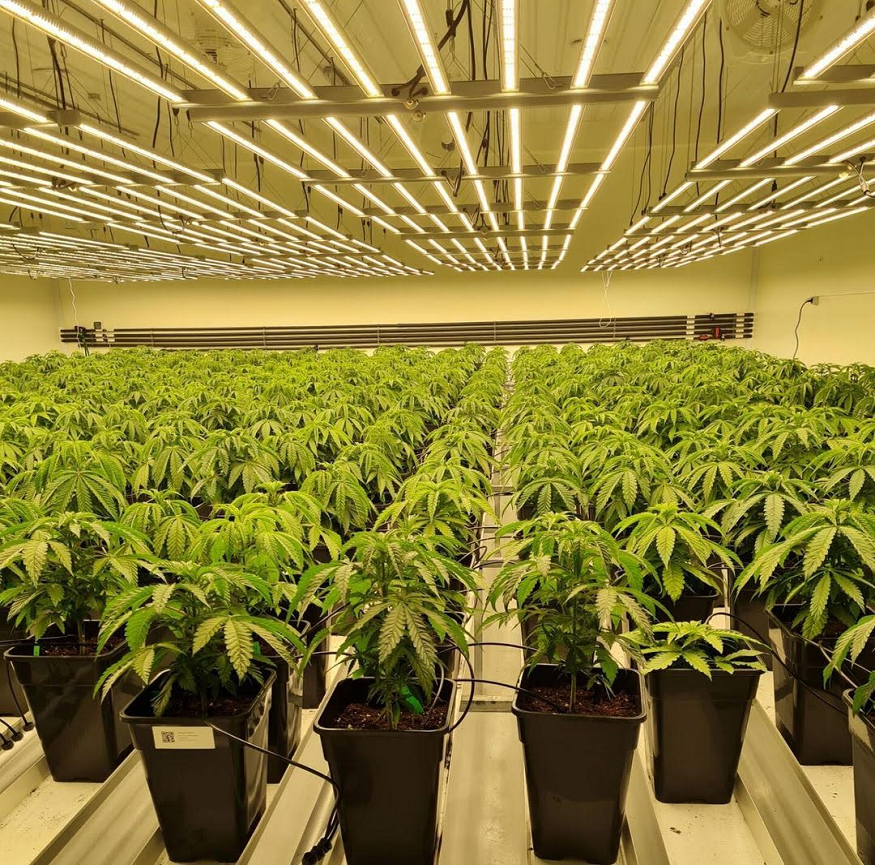As the popularity of indoor gardening and hydroponics continues to grow, so does the need for quality grow lights. And while there are a variety of different types and brands of grow lights available on the market today, LED grow lights have become increasingly popular due to their many benefits. But with so many options to choose from, how do you know which LED grow lights are suitable for you and your plants?
What are LED Grow Lights?
LED grow lights are a grow light that uses light-emitting diodes (LEDs) using LED chips to provide the necessary light for plant growth using modern and efficient technology. LEDs are much more efficient than traditional incandescent bulbs and can produce a higher quality of light, making them ideal for growing plants indoors.

LED grow lights are available in various colors, including white, blue, red, and infrared. Each color of light is absorbed differently by plants, and each can promote different stages of growth. For example, blue light is ideal for promoting vegetative growth, while red light is better for flowering and fruiting.
How to Choose the Best LED Grow Light
Now that you know a little more about LED grow lights let’s discuss how to choose the best one for your needs. There are a few factors you’ll want to consider, including:
1) The type of plants you’re growing
As we mentioned, different colors of light are better for different stages of plant growth. If you’re only growing one type of plant, you can choose a grow light that emits the specific color of light best for that plant. However, if you’re growing various plants, you’ll want a grow light that emits a full spectrum of light, including all visible-light colors.
2) The size of your grow space
The size of your grow space will determine the number and type of LEDs you need. If you have a small grow space, you won’t need as many LEDs as you would for a larger space. Likewise, if you’re growing many plants, you’ll need more LEDs than if you’re only growing a few.
3) The Type of LED Grow Light
The type of LED that grows light is another thing you must consider when picking the best one. You want to ensure that the light is not too harsh and that it will provide an even light distribution. The wrong light can cause your plants to stretch or experience stress.
Growing plants from seedling to flowering requires a full-cycle LED light. However, you may only need lights for the vegetative or blooming stages. Lamps designed for high-light plants and vegetable growth/flowering have many different options, including single-channel lights, mostly on or off systems, and two-channel lights that come with veg and bloom modes.
You can also go for programmable lights; the most advanced LED grow lights will make for an almost effortless grow. They allow you to set light schedules, customize spectrums and alter intensities using a smartphone.
You can also pick the lights depending on the shape you need, including panels, bars, or bulbs. Some manufacturers also produce LED tubes for replacing T5 or T8 fluorescent lights. You can even find DIY kits that will let you assemble your light.
4) Light Spectrum and Intensity
The light spectrum is the range of colors that the light emits. The most important part of the light spectrum for plants is the blue and red wavelengths. Blue light promotes vegetative growth, while red light helps flowering and fruiting. You also want to consider the intensity of the light, which is measured in lumens. The higher the number of lumens, the brighter the light. However, you don’t want a light that’s too bright as it can cause stress to your plants.
5) The Cost of Running and Maintaining the Lights
LED grow lights are more expensive than other grow lights, such as fluorescent or HID lights. However, they use less energy and last longer, saving you money in the long run. You’ll also want to consider the cost of cooling the lights as they produce heat. Most LED grow lights come with a built-in fan or heatsink to help keep them cool. If not, you’ll need to purchase a separate cooling system.
6) The Cost of LED Grow Lights and Your Budget
The price of LED grows lights can range from $30 to $2000 or more, depending on the factors we mentioned above. If you’re on a budget, you may want to start with a less expensive light and upgrade later as your needs change. However, if you have the money to invest in a high-quality light, it’s worth it since you’ll likely save money in the long run on your electric bill and replacement bulbs.
Conclusion
When choosing LED grow lights, you want to consider the size of your grow space, the type of light you need, the spectrum and intensity of the light, and the cost of running and maintaining the lights. LED grow lights are more expensive than other grow lights, but they use less energy and last longer, saving you money in the long run. If you’re on a budget, you may want to start with a less expensive light and upgrade later as your needs change. However, if you have the money to invest in a high-quality light, it’s worth doing so.

